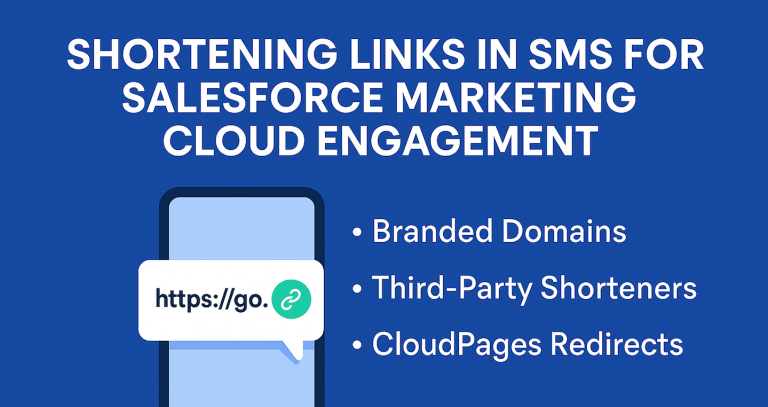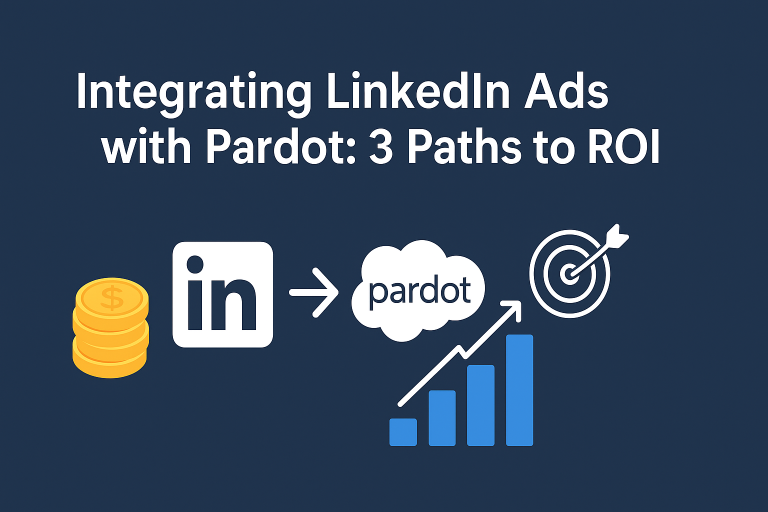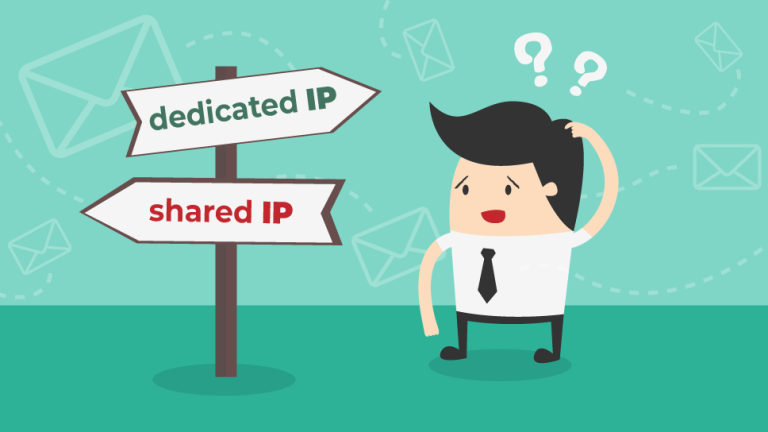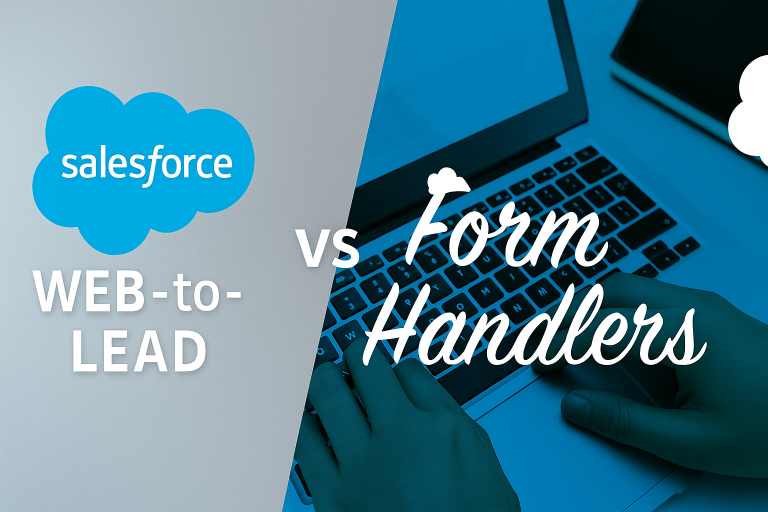Salesforce Marketing Cloud – Current Status and Future Outlook
Positioning Within Salesforce’s Ecosystem
Salesforce Marketing Cloud (SFMC) has evolved from a collection of acquired tools into a core pillar of Salesforce’s Customer 360 platform.
Historically, Salesforce’s marketing products (ExactTarget for B2C, Pardot for B2B, plus add-ons like Datorama and Audience Studio) operated as siloed systems.
Data and campaigns lived outside the main Salesforce CRM, leading to integration challenges and fragmented customer views. This is now changing dramatically.
In 2024 Salesforce introduced “Marketing Cloud on Core” – new Marketing Cloud Growth and Advanced editions built natively on the Salesforce Einstein 1 Platform. Being “on core” means Marketing Cloud functions (campaigns, segmentation, content, analytics) run directly within the Salesforce CRM environment, using standard Salesforce objects and real-time Data Cloud data.
In essence, Salesforce is repositioning Marketing Cloud from a standalone suite to an integral component of its unified platform.
Integration with Customer 360
Today SFMC is tightly woven into Salesforce’s broader ecosystem. It shares the same data foundation (Salesforce Data Cloud, the enterprise CDP) as Sales, Service, and Commerce Clouds.
This allows a single source of truth for customer profiles and omnichannel interactions. For example, marketers can target segments derived from CRM and behavioral data combined in real-time via Data Cloud.
Marketing Cloud is also leveraging core platform services like Salesforce Flow for automation and Salesforce CMS for content, rather than separate tools. The result is a seamless experience across departments – Sales, Service, and Marketing all working from the same data and using native platform capabilities, which eliminates the need for middleware or complex data syncing.
Salesforce’s broader strategy is to make Marketing Cloud the engagement engine of Customer 360, ensuring that every customer touchpoint (whether an email, ad, SMS, or interaction with a sales rep) can be personalized and connected. Salesforce’s EVP of Marketing Cloud underscores this “one-to-one personalized experience across every channel” vision, emphasizing SFMC’s role in delivering consistent messages across ads, email, mobile, web, social, and even in-person or agent interactions.
Looking ahead, Salesforce’s positioning of Marketing Cloud within its ecosystem is as the central hub for customer engagement.
It complements Salesforce’s sales and service offerings by closing the loop: data from sales/service informs marketing, and marketing insights flow back to sales and service. With the new core-native editions, Marketing Cloud is no longer an external add-on but rather a native part of the platform.
This positions Salesforce strongly against competitors by offering an all-in-one CRM + marketing + analytics solution on a unified tech stack. In summary, SFMC’s future in the Salesforce family is to be the AI-powered, data-driven marketing brain of Customer 360, leveraging the full power of Salesforce’s platform and ecosystem.
Product Roadmap and Key Innovations
Salesforce has been aggressive in enhancing Marketing Cloud’s capabilities, especially in AI, Account Engagement (Pardot), Personalization, and Integrations:
- AI and Einstein
Salesforce is infusing AI at every layer of Marketing Cloud. Its traditional Einstein features (like Einstein Send Time Optimization, Engagement Scoring, and Frequency modeling) are being augmented by generative AI (branded Einstein GPT/Agentforce).
In the new Marketing Cloud Growth and Advanced editions, Einstein is deeply embedded – marketers can use natural language prompts to create segments, generate email content, and even get AI-driven campaign strategies.
For example, Einstein GPT can suggest email copy and subject lines, accelerating content creation. AI-powered features such as Path Optimizer for journeys, predictive scores for engagement, and AI-driven next-best actions are on the roadmap or already in pilot.
At Dreamforce 2024, Salesforce showcased new AI-driven marketing innovations that use “Agentforce” (Salesforce’s generative AI agents) to automatically personalize touchpoints and recommend campaign optimizations.
We can expect further AI enhancements through 2025, such as more advanced automation of campaign testing (e.g. automated winner selection in experiments with AI recommendations is already slated for a future release) and conversational AI for marketing. All these AI investments indicate that Salesforce sees AI as key to Marketing Cloud’s future, enabling marketers to work smarter and deliver personalization at scale. - Account Engagement (Pardot)
Salesforce Marketing Cloud Account Engagement (formerly Pardot) continues to be a critical piece of the roadmap, especially for B2B marketing.
Amid the new product launches, Salesforce has reassured users that Pardot is not being sunset, but rather enhanced and tightly integrated with the new Marketing Cloud offerings. The roadmap for Account Engagement includes deeper AI integration for lead scoring and nurturing, more automation features, and native connectivity to Data Cloud.
In fact, Salesforce is evolving Account Engagement to work “side by side” with Marketing Cloud on Core. Pardot remains the go-to for B2B demand generation and lead management, while the Marketing Cloud on Core (Growth/Advanced) brings complementary capabilities like multi-channel messaging and real-time personalization to B2B marketers.
This combined approach is creating what some experts call a “dream team”: for example, a B2B marketer might use Account Engagement’s Engagement Studio to nurture leads via email, while using Marketing Cloud on Core to send coordinated SMS reminders and dynamically personalize content based on Data Cloud profiles.
The roadmap suggests continued investments in making Pardot and Marketing Cloud work in unison – sharing data, triggering campaigns across systems, and aligning with sales.
In summary, Pardot (Account Engagement) is gaining AI features and closer integration, ensuring that B2B marketing remains a first-class citizen in Salesforce’s marketing vision rather than a separate silo. - Personalization
Delivering personalized experiences in real-time is another focal point. Salesforce acquired Evergage in 2020 and turned it into Marketing Cloud Personalization (Interaction Studio), which provided web and app personalization.
Now, Salesforce has introduced a new “Salesforce Personalization” solution built natively on the core platform (as of Winter ’25). This next-gen personalization engine uses AI-driven decisioning on top of live Data Cloud profiles to tailor content across any touchpoint in real time.
Unlike the legacy Marketing Cloud Personalization tool (which, while powerful, required technical upkeep and wasn’t fully unified with the rest of Salesforce), the new Salesforce Personalization is seamlessly integrated with Data Cloud and the Einstein AI layer. It can leverage real-time data ingestion, identity resolution, and AI insights from Data Cloud to power its recommendations.
Notably, Salesforce Personalization isn’t limited to just websites – it ties into Marketing Cloud and Commerce Cloud AI features, offering things like AI-driven product recommendations, search results, and content across channels. Current Marketing Cloud Personalization users need not panic; the older product remains supported and is versatile across tech stacks.
But clearly the strategic direction is toward the core-integrated, AI-enhanced personalization that “centralizes real-time, cross-channel personalization across the entire Salesforce Platform”.
We can expect Salesforce to continue expanding these personalization capabilities, making it easier for marketers to deliver 1-to-1 journeys without heavy coding or data wrangling.
Personalization at scale, powered by Data Cloud’s unified profiles, is a key differentiator Salesforce is pushing into 2025 and beyond. - Integrations and Ecosystem
Salesforce Marketing Cloud’s development roadmap also emphasizes deeper integrations both within the Salesforce suite and externally.
On the Salesforce side, Marketing Cloud is now natively integrated with tools like Salesforce Flow (for building sophisticated journey automations in a low-code way) and with Salesforce Service Cloud (e.g. allowing marketing SMS conversations to hand off to service agents seamlessly).
An example of this is the new “Unified Conversations” for SMS in Marketing Cloud Advanced: it enables two-way text messaging where AI chatbots handle routine replies and seamlessly escalate to a human service agent when needed, using Service Cloud’s digital engagement under the hood.
This kind of cross-cloud integration is becoming a hallmark of Salesforce’s approach – breaking down barriers between marketing, sales, and service interactions.
Additionally, Marketing Cloud ties into Salesforce’s other recent innovations like Customer Data Platform (Data Cloud) and Loyalty Management, ensuring data and customer rewards can inform marketing campaigns.
Externally, Salesforce continues to support integration with ad networks, social platforms, and third-party data sources, often facilitated by MuleSoft or native connectors.
However, with Data Cloud, many external data ingestion needs are addressed through the CDP’s connectors, bringing outside data (e.g. web analytics, e-commerce data) into Marketing Cloud in real time.
On the roadmap, Salesforce is likely to further simplify integrations: for instance, connecting Marketing Cloud Personalization with Account Engagement is now supported so that segments and behavioral insights flow between B2B and B2C marketing systems.
We might also see tighter Slack integration (for notifications or approvals in marketing workflows) given Salesforce’s ownership of Slack, and more open APIs to connect Martech and Adtech tools.
The overarching trend is convergence – enabling data and workflow integration across all Salesforce clouds and enabling marketers to activate data anywhere (email, mobile, social, web, advertising, etc.) from one unified platform.
In summary, Salesforce’s roadmap for Marketing Cloud is centered on unification and intelligence. By leveraging Einstein AI for smarter automation, keeping Pardot tightly coupled for B2B, launching new personalization engines, and ensuring Marketing Cloud is plugged into the rest of the Salesforce (and external) ecosystem,
Salesforce is fortifying Marketing Cloud’s position as a state-of-the-art, AI-first marketing platform.
Recent updates in 2024–2025 (like the Growth/Advanced editions, Einstein GPT, and Salesforce Personalization) underscore Salesforce’s commitment to innovation in these areas and set the stage for marketers to deliver more data-driven, personalized, and connected campaigns than ever before.
Competitive Landscape – SFMC vs. Adobe, HubSpot, and Oracle
Salesforce Marketing Cloud operates in a highly competitive marketing technology (MarTech) arena. Its primary competitors include Adobe Experience Cloud, HubSpot, and Oracle Marketing Cloud, each with different strengths. Below is a comparison focusing on features, market traction, and adoption:
- Adobe Experience Cloud (Marketing)
Features & Differentiators:
Adobe offers a broad suite of marketing tools, including Adobe Campaign for cross-channel campaigns and Marketo Engage for B2B marketing automation.
Much like SFMC, Adobe’s solutions cover email, mobile, social, advertising, personalization, and analytics. Adobe’s strength lies in its rich heritage in content and creative tools – integration with Adobe Creative Cloud and Adobe Experience Manager CMS is a key differentiator for content-centric marketing.
Adobe has also built the Adobe Experience Platform (AEP) as a central customer data hub (their version of a CDP) with Adobe Sensei AI powering insights and personalization.
In practice, both SFMC and Adobe provide robust campaign management and personalization, but Adobe often excels in workflow flexibility and analytics (Adobe Analytics is an industry leader in web/app analytics).
For instance, Adobe Campaign has powerful campaign workflow automation and personalization rules, similar to SFMC’s Journey Builder capabilities.
Market Share & Adoption:
Adobe is one of the closest rivals to Salesforce in the enterprise segment.
According to IDC data, Salesforce Marketing Cloud holds about 14.1% of the marketing software market, with Adobe Experience Cloud close behind at 12%.
Both are considered leaders for large organizations’ marketing needs and often compete head-to-head. Adobe’s customer base includes many global enterprises in retail, media, and financial services (overlapping with SFMC’s base).
Analysts consistently recognize Adobe as a leader alongside Salesforce – for example, the Gartner Magic Quadrant for Multichannel Marketing Hubs 2024 also placed Adobe in the Leaders quadrant (Adobe has been touted as a Leader in Forrester’s Cross-Channel Marketing Hubs Wave, Q4 2024 as well) business.adobe.com .
Strengths vs. SFMC:
Adobe’s strengths include its end-to-end content and marketing ecosystem and deep analytics.
Marketers who already rely on Adobe for content creation or web analytics may find Adobe’s marketing tools integrate naturally.
Weaknesses:
Adobe’s marketing products, like SFMC, can be complex to implement. Managing Adobe Campaign or Marketo often requires technical expertise or consulting support, similar to the old SFMC.
Additionally, Adobe’s multiple tools (Marketo vs. Campaign, plus separate Analytics and AEP) mean customers must integrate components on their own – whereas Salesforce is moving toward an all-in-one unified platform.
In recent years Adobe has been investing in AI (e.g. Adobe Sensei and the newer generative AI features like Adobe Firefly for content), but Salesforce’s aggressive push with Einstein GPT has intensified the AI race.
Overall, Salesforce and Adobe are the two dominant players in marketing software for enterprise, each with a sizeable market share and a Leader position in analyst evaluations martech360.com. - HubSpot Marketing Hub
Features & Differentiators:
HubSpot represents a different segment of the market, focusing on an all-in-one platform that combines CRM with marketing, sales, and service tools, primarily for small and mid-sized businesses (though it has been moving up-market steadily).
HubSpot’s Marketing Hub includes email marketing, web forms, landing pages, social media publishing, blog/SEO tools, ads integration, and basic automation workflows – all in a unified, user-friendly interface.
The key differentiator is ease of use and quick deployment; HubSpot is known for its intuitive UI and fast learning curve, allowing marketing teams (even with limited technical resources) to execute campaigns and see results quickly. HubSpot has also been investing in AI features (e.g. “Content Assistant” and “Breeze AI” for content generation and optimization) to keep up with trends.
However, compared to SFMC, HubSpot’s advanced capabilities (like sophisticated segment logic, multi-touch journey orchestration, or hyper-personalization) are somewhat limited – HubSpot’s workflows are excellent for simpler automations but might not handle the scale/complexity that SFMC or Adobe can in very large enterprises.
Market Share & Adoption:
In terms of number of customers, HubSpot far exceeds the others – as of 2024, HubSpot serves over 240,000+ customers globally (many of them SMBs).
Its annual revenue (~$2.6B in 2024) is smaller than Salesforce or Adobe’s marketing divisions, but growing at ~25% YoY hublead.io.
HubSpot has been recognized by Gartner as a Leader in B2B Marketing Automation for four years running, reflecting its strong vision and execution for the SMB/midmarket segment. Users often praise HubSpot’s unified database and the seamless handoff between marketing and sales within one system – an area Salesforce addresses by integration between Marketing Cloud and Sales Cloud, but HubSpot offers natively out-of-the-box.
Strengths vs. SFMC:
HubSpot’s strength is definitely simplicity and user experience. It requires far less technical overhead to get started – no need for separate system integrators or writing SQL queries, which historically were needed in SFMC.
All core tools are built-in (email, CRM, analytics), making it attractive to resource-constrained teams.
Weaknesses:
On the flip side, HubSpot can struggle with the scale and sophisticated needs of large enterprises.
Its flexibility for custom data models or very complex multi-channel journeys is limited compared to Salesforce’s now highly customizable platform.
Additionally, HubSpot’s pricing, while tiered for SMB, can become expensive at the higher tiers when databases grow large or advanced features are needed, narrowing the cost advantage.
In summary, HubSpot is a formidable competitor especially for mid-market customers or those who prioritize ease of deployment – it’s often “Salesforce-lite” with a smoother learning curve, though it doesn’t (yet) match the extensive feature depth of SFMC for complex omnichannel programs. - Oracle Marketing Cloud
Features & Differentiators:
Oracle’s marketing suite is anchored by Oracle Eloqua (for B2B marketing automation) and Oracle Responsys (for B2C cross-channel campaigns), along with Oracle BlueKai (data management platform) and Oracle Infinity (analytics/personalization).
Eloqua, a pioneer in B2B marketing software, offers robust campaign canvas tools, lead scoring, and integration with various CRM systems.
Responsys similarly is a powerful platform for orchestrating email, mobile, and web campaigns for consumers.
Oracle’s differentiator historically was its depth in database and data management – Oracle’s platforms are quite data-centric and can handle complex segmentation and scoring. They have introduced the Oracle CX Unity (Customer Data Platform) to unify customer data for personalization, akin to Salesforce’s Data Cloud.
Market Share & Adoption:
Oracle has a long pedigree in this space: it’s consistently been recognized by Gartner as a Leader in marketing automation (the company notes Oracle was named a Leader in the 2024 Gartner Magic Quadrant for B2B Marketing Automation, marking the 12th consecutive year Eloqua earned that Leader spot). IDC also counts Oracle among the leaders in both B2C and B2B marketing/CDP markets (with Salesforce edging ahead on AI and integration).
However, Oracle’s market share in marketing automation is generally a bit behind Salesforce and Adobe. For instance, IDC’s analysis of the B2C marketing space lists Salesforce, Adobe, and Oracle all in leadership, but Salesforce was noted to be “ahead of competitors such as Oracle and Adobe” in areas like AI and data integration.
Oracle’s customer base includes many large enterprises (especially in industries like technology, manufacturing, and financial services) that adopted Eloqua or Responsys in the 2010s.
In recent years, some of those customers have considered or moved to Salesforce or Adobe, but Oracle still retains a core base that values its solutions.
Strengths vs. SFMC:
Oracle’s Eloqua is known for sophisticated lead management and scoring – some large B2B organizations prefer Eloqua’s flexibility in defining custom campaigns and its CRM-agnostic nature (it can work with Salesforce CRM, Microsoft Dynamics, etc., whereas Pardot is naturally tied to Salesforce CRM).
Oracle’s platforms are also very extensible; they offer strong APIs and can be molded to complex business processes (often through Oracle’s larger CX suite).
Weaknesses:
A common critique is that Oracle’s marketing cloud hasn’t innovated as quickly on the user experience and AI fronts as Salesforce has.
The tools can be complex and resource-intensive – for example, running Oracle Eloqua often requires specialized experts or partners, similar to how SFMC was in the past.
Additionally, Oracle’s various pieces (Eloqua, Responsys, BlueKai) have not been fully unified into a single platform experience, which can lead to data silos unless a customer invests heavily in integration.
Salesforce’s recent strategy of one unified platform (with Data Cloud and Einstein) contrasts with Oracle’s somewhat fragmented suite.
Thus, while Oracle’s functionality is rich, the seamlessness and real-time AI-driven personalization that Salesforce is focusing on may give Salesforce an edge in the coming years.
Oracle is certainly still a competitor to watch – it remains in the leaders category by analysts and serves many enterprises – but Salesforce’s momentum in unifying B2B and B2C marketing with cutting-edge AI is setting a pace that Oracle will need to match to remain equally dominant.
Summary (Competitor Comparison):
In the enterprise market, Salesforce and Adobe are the two heavyweights, each with ~12–14% market share and extensive product suites codleo.com.
Both are leaders in the eyes of Gartner and Forrester, and the competition often comes down to specific needs (content and analytics emphasis with Adobe vs. sales integration and breadth of SF ecosystem with Salesforce).
HubSpot has carved out a leadership position in the mid-market and is growing up-market, leveraging ease-of-use as its main selling point.
Oracle remains a long-standing leader especially for companies that adopted its marketing tools early on, though its market momentum is perceived as steadier (and slightly trailing) compared to the innovation pace of Salesforce and Adobe.
Other competitors exist (SAP Emarsys, SAS, IBM’s offerings, newer players like Braze, etc.), but the Adobe, HubSpot, and Oracle are indeed the marquee rivals.
Below is a quick feature comparison table of SFMC and these competitors:
| Platform | Notable Strengths | Primary Segment | Analyst Position |
|---|---|---|---|
| Salesforce Marketing Cloud | Native CRM integration (Salesforce CRM), broad multi-channel suite (email, mobile, social, ads), unified real-time CDP (Data Cloud), strong AI (Einstein GPT), huge partner ecosystem. | Enterprise (B2C & B2B) | – Leader in Gartner MQ (7+ years); – Leader in Forrester Wave (CCMH Q4’24). – Market share ~14%. |
| Adobe Experience Cloud | Deep content and creative integration (Adobe CC/AEM), powerful campaign workflows and analytics (Adobe Analytics), robust personalization and journey tools, strong B2B marketing via Marketo. | Enterprise (B2C & B2B) | – Leader in Gartner & Forrester (CCMH). – Market share ~12%. – Famous for analytics & content management. |
| HubSpot Marketing Hub | Ease of use and quick deployment, all-in-one CRM+Marketing for SMB, modern UI, solid inbound marketing tools (content, SEO, social), growing AI features (content generation). | SMB and Mid-market (moving toward some Enterprise) | – Leader in Gartner MQ for B2B (4th year). – Huge user base (240k+ customers) but smaller revenue share. – Praised for usability. |
| Oracle Marketing Cloud | Very mature B2B automation (Eloqua) with advanced lead scoring and campaign canvas, strong database marketing capabilities, robust cross-channel campaign (Responsys), Oracle’s data expertise (Unity CDP). | Enterprise (especially legacy Eloqua/Responsys users) | – Leader in Gartner MQ for B2B (12th year) – Regarded as leader in IDC analysis (with SF & Adobe). – Stable presence, though innovation pace seen as slower by some. |
Analyst Perspectives – Strengths, Weaknesses, and Trajectory
Industry analysts like Gartner, Forrester, and IDC generally view Salesforce Marketing Cloud as a market leader with a strong vision, while also noting some challenges.
Below we summarize key strengths and weaknesses from their perspectives, along with the predicted trajectory for SFMC:
Strengths (Analyst-Noted):
- Comprehensive, Multichannel Capabilities: Gartner’s evaluation of Salesforce in the Multichannel Marketing Hubs category highlights its ability to orchestrate personalized customer journeys across a wide range of channels (email, mobile, ads, social, etc.).
SFMC provides the foundational tools for customer journey orchestration and “next best action” programs, which are essential for modern marketing.
This breadth is a core strength – few platforms match Salesforce in covering both B2C and B2B marketing needs at scale. - Unified Data and Platform Integration: Analysts consistently cite Salesforce’s integration of Marketing Cloud with its broader CRM and Data Cloud as a major advantage. Working on a single platform means marketing, sales, and service share one source of truth.
IDC specifically lauded Salesforce for its Data Cloud integration and data governance capabilities in its CDP report, noting Salesforce’s ability to harmonize data across business lines as a differentiator.
This unified approach improves marketers’ ability to execute consistent, data-driven campaigns (e.g., leveraging real-time customer data and segmentation natively within Marketing Cloud). - AI and Innovation Velocity: Salesforce’s heavy investment in AI for marketing is seen as forward-thinking. Gartner and IDC both point out Salesforce’s embedding of AI (Einstein, now Einstein GPT/Agentforce) to automate and optimize marketing interactions.
Forrester, in their Wave reports, looks for innovation in areas like AI-driven personalization and journey optimization – areas where Salesforce is pushing aggressively (e.g. GPT-powered content, AI-driven segmentation). The introduction of generative AI features in 2024 positions SFMC as a pioneer (Salesforce touts Einstein GPT as “the world’s first generative AI for CRM”).
Analysts believe this will help marketers deploy campaigns faster and with greater personalization. In Gartner’s words, Salesforce enables marketers to “deploy personalized campaigns faster with AI and automation at every step”.
The pace of innovation (new AI features, new editions on core, etc.) is generally viewed as a strength indicating Salesforce’s commitment to remain cutting-edge. - Ecosystem and Market Presence: Salesforce’s overall market presence in CRM and its ecosystem of partners and integrations benefit Marketing Cloud.
Salesforce has been the #1 CRM provider for years and leverages that position to cross-sell Marketing Cloud to a vast customer base. IDC reports show Salesforce as the revenue leader in marketing applications, with ~23% of the CRM-related market (across sales, service, marketing) codleo.com.
Specifically in marketing automation, Salesforce (Marketing Cloud + Pardot) leads in market share (approx 14%, #1) with a large install base of enterprise customers.
This market clout means a strong community of users, consultants, and tech partners familiar with SFMC, which Gartner Peer Insights and others note as a positive (customers benefit from abundant resources and add-ons).
Salesforce’s inclusion in virtually every analyst leadership ranking – Leader in Gartner’s MMH MQ for 7 years straight, Leader in Gartner’s B2B Marketing Automation MQ, and Leader in Forrester Waves – underscores its strengths and consistent execution.
Weaknesses (Analyst-Noted):
- Complexity and Learning Curve: A common caution is that SFMC (historically) has a steep learning curve and requires skilled resources to operate optimally.
Real-world users and consultants often comment that Marketing Cloud’s powerful features come with complexity in setup and maintenance. For example, setting up advanced email sequences or data integrations in the legacy SFMC could involve writing SQL queries, scripting in AMPscript, and navigating multiple studios, which is not trivial.
Even Gartner has previously noted that Salesforce’s marketing solutions could be challenging for organizations without solid technical support.
Competitors like HubSpot or newer engagement platforms have capitalized on this by offering simpler UIs. As one comparison put it, “Salesforce Marketing Cloud is more expensive and complex to set up and use” than some newer platforms and often “relies on third-party system integrators” for implementations.
While Salesforce is addressing this (the new Growth/Advanced editions aim to simplify with native platform tools and eliminate old-school integrations), the perception of complexity remains a consideration, especially for mid-sized companies. - Cost: Salesforce Marketing Cloud is generally positioned at the higher end of the market in pricing.
Gartner and Forrester often hear from clients that the total cost of ownership can be high – licenses for various Studios/Clouds, required Salesforce core licenses for new editions, plus implementation costs.
For instance, the new Marketing Cloud Advanced edition requires at least Salesforce Enterprise CRM licenses, which may make it less accessible to smaller organizations.
Competitors like HubSpot or some Oracle packages can sometimes undercut on price (at least in initial tiers). This isn’t always explicitly stated in analyst write-ups (which focus more on capabilities), but it’s an open secret that Salesforce’s robust solution comes at a premium.
Cost can be a barrier or a weakness when justifying ROI, especially if not all features are utilized fully by a customer. - Historic Data Silos / Transition for Existing Users: Another challenge lies in Salesforce’s transition from the legacy Marketing Cloud architecture to the new “Marketing Cloud on Core.”
Existing SFMC customers (on the ExactTarget-based system) might not instantly benefit from the new unified platform without migrating or adopting the new editions.
Gartner might caution that customers need to plan for how new Data Cloud-based features work in conjunction with their current setup.
There’s a complexity in having two parallel Marketing Cloud offerings (the legacy Marketing Cloud Engagement vs. the new Marketing Cloud Growth/Advanced on Core).
Salesforce’s strategy is evolving, but during the transition some users may experience confusion or have to operate hybrid models.
Analysts and consultants have pointed out that while the new platform is promising, Salesforce will need to manage the product convergence carefully so as not to alienate or disrupt existing customers.
The good news is Salesforce is actively converging these – e.g. enabling Account Engagement and Marketing Cloud Personalization to plug into Data Cloud and each other – but this is a journey in progress.
Predicted Trajectory:
Analysts predict a positive trajectory for Salesforce Marketing Cloud, provided Salesforce executes on its vision.
In Gartner’s 2024 reports, Salesforce’s Marketing Cloud strategy of unifying data, AI, and channels is seen as aligning well with where the market is heading (need for personalized, real-time engagement) martech360.com.
Gartner notes that modern customers expect “one-to-one personalized experiences across every channel,” and Salesforce is strongly positioned to deliver that via its extensive toolset and AI-driven approach.
The fact that Salesforce continues to secure Leader positions year after year suggests Gartner expects it to maintain its leadership in the space.
IDC’s recent evaluation of Customer Data Platforms (a proxy for marketing future-readiness) placed Salesforce at the top, ahead of Adobe and Oracle, specifically citing Salesforce’s AI capabilities and integration as forward-looking strengths salesforceben.com.
This indicates that IDC believes Salesforce’s emphasis on AI (Agentforce) and real-time data will keep it ahead in enabling next-gen marketing use cases.
Forrester, too, in its Wave for Cross-Channel Marketing Hubs (Q4 2024) identified Salesforce as a Leader, which implies Salesforce has both strong current offering and strategy for the future salesforce.com.
In terms of market adoption, Salesforce is likely to continue growing its Marketing Cloud customer base, especially as the new simpler Growth edition opens doors to more Salesforce CRM customers (initially Growth was touted as good for SMB/B2B marketers to get onto the platform).
By moving down-market slightly with Growth and up-market with Advanced, Salesforce is expanding coverage.
Combined with the general growth of digital marketing spend, Salesforce’s marketing revenue is expected to rise.
Its market share lead over Adobe could widen if the AI and platform unification story resonates (currently 14.1% vs 12% in favor of SFMC per recent figures) codleo.com.
Analysts do caution that Salesforce needs to continue simplifying the user experience and demonstrating quick wins with AI to fend off competitors that market “ease” (like HubSpot or newer AI-driven startups). The good news for Salesforce is that early reviews of the new platform on core are positive – it eliminates many past pain points (no more manual CRM syncs, no more disconnected data extensions)forcery.com. This is likely to improve customer satisfaction in the long run, addressing prior criticisms.
Strategic Moves
Strategically, Salesforce is betting on a few key differentiators for the future:
(1) Tightly coupling marketing with sales/service (no competitor has as native a CRM-marketing link at scale as Salesforce now does),
(2) making AI a co-pilot for marketers (Einstein GPT and “Agentic AI” throughout the product) to boost productivity, and
(3) providing an end-to-end platform (data to engagement to analytics all in one).
Salesforce’s recent launch of Marketing Cloud Advanced at Dreamforce ’24 – with features like Path Optimizer, conversational SMS, and opportunity-level attribution – shows it is targeting sophisticated enterprise needs within its platform.
Meanwhile, its embrace of real-time data and personalization indicates it’s staying ahead of the consumer expectation curve (in an era when customers demand relevance in milliseconds).
Overall, the analyst consensus is that Salesforce Marketing Cloud’s future is robust: it is expected to remain a leader in the MarTech space through 2025 and beyond, so long as Salesforce continues to innovate and address usability.
Gartner’s Magic Quadrant commentary essentially reinforces Salesforce’s commitment to data, AI, and automation to drive personalized experiences martech360.com.
If Salesforce executes its roadmap – unifying all marketing capabilities on the Einstein 1 platform, enabling AI-driven marketing “agents,” and leveraging its Customer 360 advantage – it is poised to set the pace for the industry.
In conclusion, Salesforce Marketing Cloud is entering a new era as an AI-powered, unified marketing platform.
Its current strengths (comprehensive features, platform integration, and market momentum) are being bolstered by rapid innovation in AI and data unification. Challenges around complexity are being actively tackled, though competitors will continue to pressure Salesforce on cost and ease-of-use fronts.
Analysts view Salesforce’s strategic moves (e.g. integrating Pardot and core, launching Salesforce Personalization, pushing generative AI) as positioning the product for continued leadership.
Salesforce Marketing Cloud is expected to not only maintain its dominant position against Adobe, HubSpot, Oracle, etc., but potentially extend its lead by offering marketers a uniquely powerful toolkit — one that is deeply integrated with the rest of the business and augmented by the latest AI technology.
The trajectory is clear: Salesforce Marketing Cloud is set to remain a cornerstone of the MarTech landscape, driving smarter and more connected customer engagements in the years ahead.
Sources:
- Salesforce Ben – Breaking News: Marketing Cloud Advanced Edition (Dreamforce ’24) salesforceben.com
- Forcery (T. Loughhead) – “Marketing Cloud on Core” Analysis forcery.com
- Sercante Blog – Account Engagement & Marketing Cloud Future thespotforpardot.com
- Salesforce Ben – Salesforce Personalization vs. Marketing Cloud Personalization salesforceben.com
- Codleo/IDC Data – Market Share Stats codleo.com
- MarTech360 News – Gartner MQ 2024 (Multichannel Marketing Hubs) martech360.com
- Salesforce News – Gartner MQ 2024 (B2B Marketing Automation) salesforce.com
- Salesforce Ben (T. Morgan) – IDC CDP MarketScape 2025 salesforceben.com
- Catmedia Blog – Gartner 2024 B2B Marketing Automation Leaders blog.catmedia.ie
- Insider (Blog) – “Braze vs Salesforce” Comment on Complexityuseinsider.com (user perspective)
- Gartner Peer Insights via Codleo – Fortune 500 usage / market data codleo.com.







